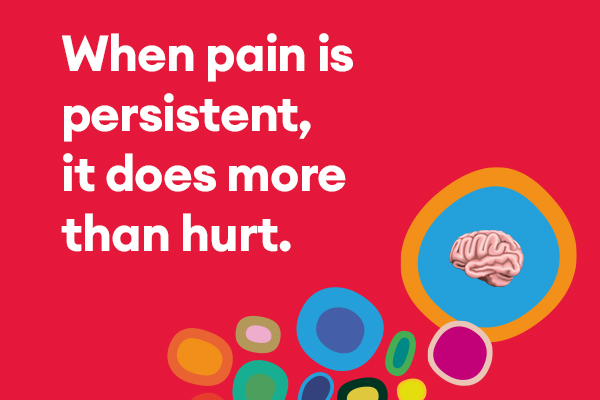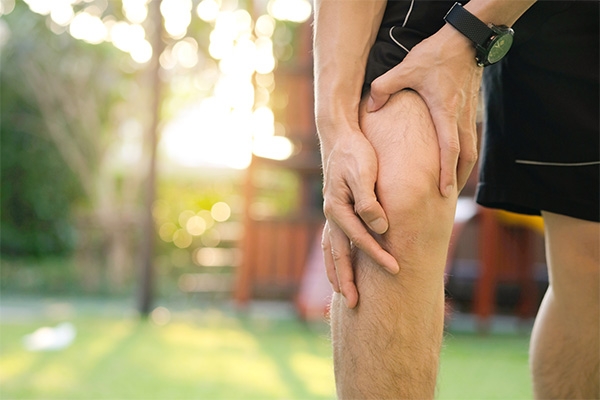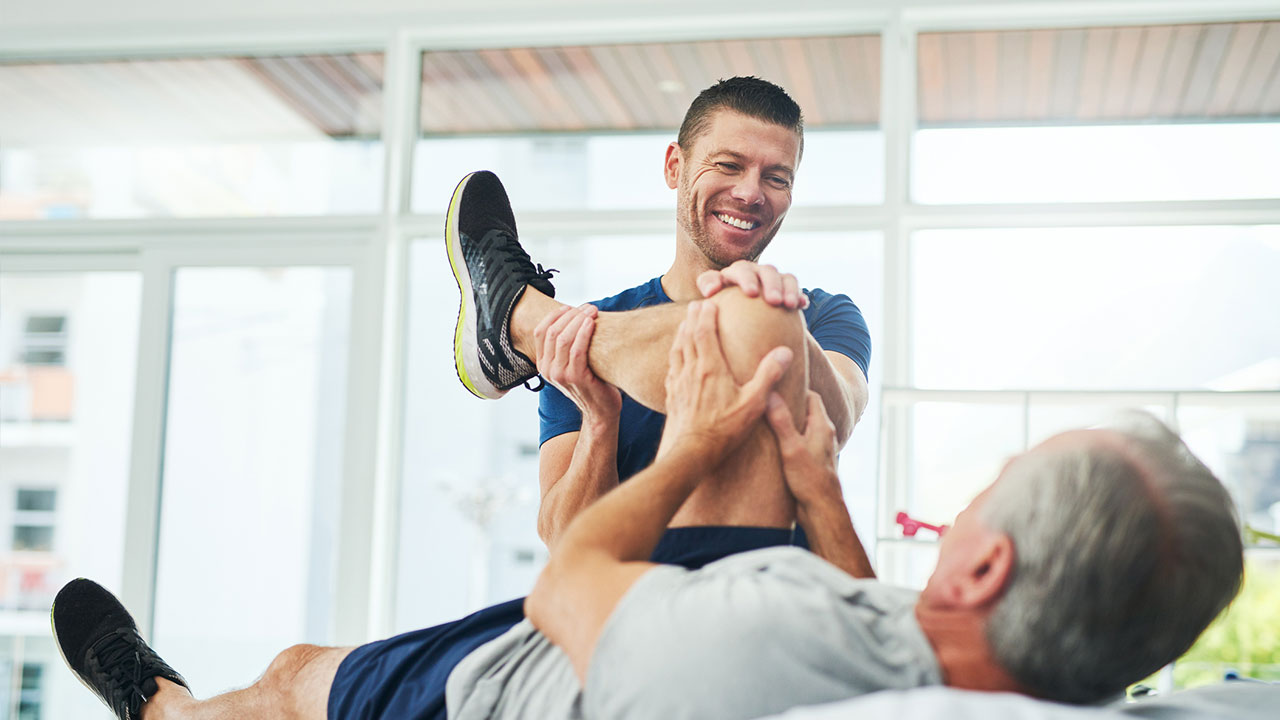Written by Medibank
July 2023
The hip joint is not only the body’s largest joint, it’s a very common site of joint-related pain from a variety of causes, meaning hip pain can affect people of all ages.
So, what are the main causes? When can you classify the hip pain you’re experiencing as 'chronic'? Here’s what you need to know.

Most common reasons for hip pain
A wide range of conditions can lead to hip pain. On one end of the scale, you could have a strained muscle, an irritated nerve or an inflamed tendon. At the other end of the scale, there could be an injury, a fracture or even an infection. Sometimes, hip pain can also be what’s called ‘referred pain’, which means it stems from an issue in another area of your body, such as a lower back problem, for example.
Hips are also commonly affected by arthritis, particularly osteoarthritis, which creates pain and stiffness in the hip joint. Plus, not only is carrying too much weight one of the most significant risk factors for developing osteoarthritis, research shows it’s also linked to experiencing hip pain all on its own.
What are the first signs of hip problems?
Hip problems usually cause pain inside the hip joint, or even in the groin, but exactly where, when and how you first experience symptoms will depend on the type of hip issue you have.
For example, if you have a strained muscle or an inflamed tendon around one of your hip joints, the first thing you might notice is pain in your upper thigh or outside your hip. While a bone fracture can cause swelling, bruising and loss of movement.
If you have osteoarthritis, as well as hip pain and stiffness in your joint, you might also notice muscle weakness, clicking noises from the hip and a grating sensation when you move your hip joint.
How do I know if I have chronic hip pain?
Pain falls into 2 main categories – acute and chronic. While acute pain starts suddenly, often in response to an injury, and is usually short-lived, chronic pain usually lasts longer than 3 months.
Signs to watch for hip pain
If you’re unsure about whether your hip pain is cause for concern, or when to consider making a doctor’s appointment to discuss it, the following signs are a good guide to keep in mind. Seek medical advice if any of the following apply to you:
- An accident has left you with hip pain: If you have hip pain as a result of something like a fall, you may have injured your hip joint. Hip pain can also be the result of a fracture to the top of the femur – that’s the thigh bone that the hip joint’s ‘ball’ is attached to.
- Your hip pain is sudden and intense: If your hip pain appears suddenly and is intensely painful, or means you can’t move your hips or put your weight on your legs, see your doctor as soon as possible.
- The area is swollen: This can also be a symptom of a bone fracture, particularly if it’s accompanied by a loss of movement.
- Your pain is accompanied by a fever: If your temperature is 38°C, you probably have a fever and, combined with hip pain, this can be a sign of a specific type of infection called septic arthritis. This is an uncommon condition, but it does require urgent medical attention, so contact your doctor as soon as possible if you’re concerned. As well as pain or tenderness near the hip joint that starts suddenly, other symptoms of an infection include heat, swelling and redness near the joint and difficulty moving the hip.
- The pain in your hip is ongoing: Chronic pain not only impacts quality of life, it may indicate that hip osteoarthritis is present. It’s important to see your doctor for an official diagnosis so that a management plan can be developed.
- The hip pain treatments you’ve been using are no longer effective: Even once you’ve been diagnosed with osteoarthritis and are actively using joint pain relief treatments to manage it, it’s important to remember that osteoarthritis pain can change over time. This may mean that different medications and treatments are required to manage the pain.
- Your hip pain – or the mobility issues it’s causing – is interfering with your daily life: If you’re finding it difficult to sleep, look after yourself without help from others, easily perform daily tasks or enjoy activities that usually bring you joy, it may be time to talk to your doctor about the possibility of hip replacement surgery.
Hip pain exercises
When you’re living with hip osteoarthritis, making strengthening exercises that build the muscles around your hip a regular part of your routine is a good idea to help relieve pain and take the pressure off your hip joints. Talk to your doctor or physiotherapist before you begin any strengthening exercise program, so you can get started safely.
Stretches for hip pain
There are also stretches you can use to combat hip pain, provided your doctor or physiotherapist considers it safe for you to do so, including these the following:*
Stretch 1: TFL/ITB stretch
Stand alongside a wall, so that your painful hip is closest to the wall and your forearm is against it, horizontally, for support. Place your other hand on your hip. Cross your outside leg over the one closest to the wall and, pushing your hips towards the wall, move your torso away from it, keeping your chest facing forwards. You should feel this stretch in the side of your painful hip and down the side of your thigh.
Stretch 2: Kneeling hip flexor stretch
Kneel on a padded mat on the floor. From your kneeling position, lunge the leg that’s free of hip pain forward, so that the thigh is parallel with the floor and your knee is bent at a 90-degree angle. Place your hands on your bent knee, keep your back straight and gently shift your hips forward until you feel a stretch through your back leg’s thigh and groin area.
Stretch 3: Piriformis stretch
Lie on the floor on your back and, with both legs flat on the ground, place the ankle of your ‘sore hip’ leg on your opposite thigh, just near your knee. Slowly bend your ‘good leg’, sliding your heel towards your buttocks and letting the knee of your affected leg drop out to the side. You should feel a stretch through your sore hip. To increase the intensity, link your fingers behind the thigh of your good leg and pull it towards you, until your foot lifts off the ground slightly.
*Always consult your doctor, physiotherapist or an exercise physiologist if you have any concerns about exercising.
Read more about joint pain
Looking for something else?
Visit Joint health for more information.
Things you need to know
While we hope you find this information helpful, please note that it is general in nature. It is not health advice, and is not tailored to meet your individual health needs. You should always consult a trusted health professional before making decisions about your health care. While we have prepared the information carefully, we can’t guarantee that it is accurate, complete or up-to-date. And while we may mention goods or services provided by others, we aren’t specifically endorsing them and can’t accept responsibility for them. For these reasons we are unable to accept responsibility for any loss that may be sustained from acting on this information (subject to applicable consumer guarantees).




